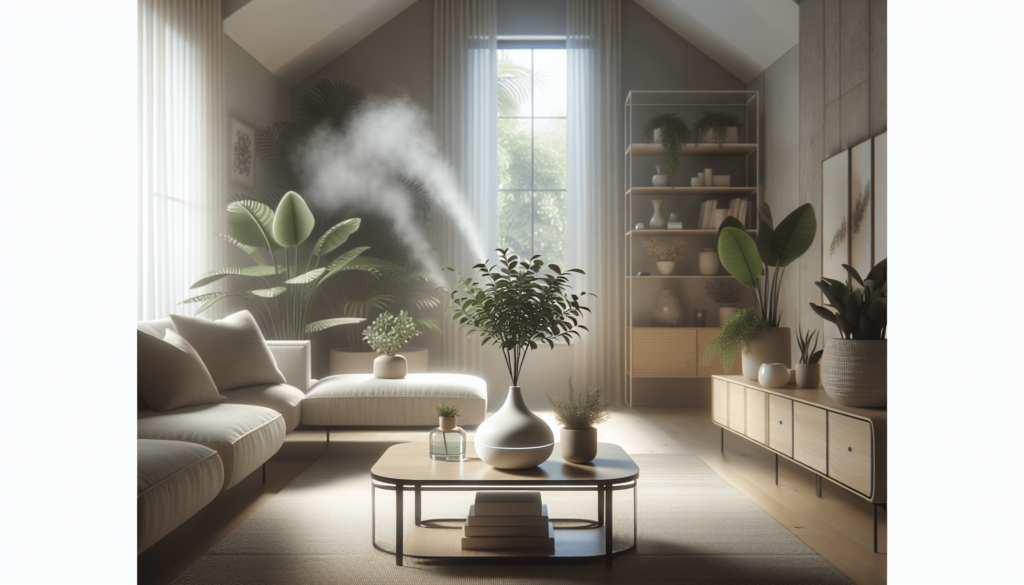Is your home fragrance causing you some nasal congestion or sneezing? It can be surprising to discover how much the scents that surround you can impact your well-being, especially when allergies come into play. In this friendly guide, we’ll chat about how you can choose home fragrances that won’t leave you reaching for a tissue. Understanding how to make allergy-friendly choices can make your living space both pleasant and comfortable.

Understanding Why Fragrances Can Trigger Allergies
Before diving into selecting the right home fragrance, it’s helpful to understand why some scents may not be your friend. Many fragrances contain a variety of ingredients designed to produce a pleasing aroma, but some of these elements can be irritating to your respiratory system. Identifying potential allergens is your first step.
Common Allergens in Home Fragrances
The ingredients list on a bottle of room spray or candle can be daunting, but decoding it is necessary to identify potential allergens. Common culprits include:
- Synthetic Fragrances: Often made from petroleum-based chemicals, these can aggravate respiratory issues.
- Essential Oils: Natural doesn’t always mean non-irritating. Some essential oils like eucalyptus and lavender can be triggering.
- Parabens and Phthalates: Frequently found in perfumes and air fresheners, these can cause irritation.
- Formaldehyde and Acetaldehyde: Present in many household cleaning products and some fragrances, these are known irritants.
Understanding these will help you make informed decisions when selecting home fragrances that are gentle on your system.
Opt for Natural Fragrance Alternatives
While natural alternatives aren’t always the perfect solution, they’re often a safer bet than synthetics and chemicals. Let’s talk about natural fragrance options that could better suit your needs.
Benefits of Natural Fragrances
Using natural fragrances can reduce your exposure to potentially irritating chemicals. Here’s what you gain:
- Reduced Allergy Risk: Fewer synthetic chemicals mean fewer possible irritants.
- Environmentally Friendly: Natural products often have a lower environmental impact.
- Aromatherapy Benefits: Certain natural scents can promote relaxation and wellbeing.
Popular Natural Fragrance Options
Considering exploring essential oils, beeswax or soy candles, and naturally infused reed diffusers. Always ensure these are free from added chemicals.
Consider Hypoallergenic Products
Some brands cater to sensitive noses by offering hypoallergenic products. These are crafted to minimize the risk of allergic reactions. Hypoallergenic home fragrances aim to sidestep common irritants without sacrificing scent.
How Are Hypoallergenic Fragrances Made?
Manufacturers typically avoid using aggressive chemicals and focus on crafting scents that don’t trigger the common allergies. Reading labels and searching for hypoallergenic certifications can point you in a tolerable direction.
Brands Known for Hypoallergenic Fragrances
Look for labels like “hypoallergenic”, “sensitive”, or “allergy-tested”. Research brands that specialize in minimal and natural ingredient formulas. These typically offer a more pleasant experience for your senses.
Testing Before Committing
Once you’ve selected a potential fragrance, testing it is a good practice. This ensures it doesn’t prompt an allergic response.
Patch Testing
A safe method is patch testing, where you apply a small amount of the fragrance to your wrist or forearm. If no reaction (such as redness or itching) occurs after 24-48 hours, it’s generally safe for use.
Sample Sizes
Many brands offer sample sizes or testers. This is an economical way to try a product without committing to full-sized versions, making it easier on your budget if the fragrance turns out to be unsuitable.

Ventilation Matters
Another factor in maintaining an allergy-friendly environment is ensuring good air quality inside your home.
Improving Indoor Air Quality
Open windows regularly, use air purifiers, and don’t overcrowd your space with too many fragrant items. Ventilation can help dilute any scents, reducing their intensity and potential to irritate.
Regular Cleaning
Keeping spaces clean and free of dust and molds also helps improve indoor air quality. The fewer irritants in your air, the less likely you are to experience unwanted allergic symptoms.
DIY Home Fragrances
Creating your own home fragrances can be a fun way to ensure you know exactly what’s in it. Plus, it’s a cost-effective and creative alternative.
Simple DIY Fragrance Ideas
Try simmering a pot of water with natural ingredients like citrus peels, cinnamon sticks, or vanilla extract for a delightful aroma. These not only smell great but also add warmth and character to your space.
Essential Oil Fans
Essential oil diffusers allow you to mix and match different oils to create custom scents tailored to your preferences. But again, test these individually to ensure they’re not triggering allergic reactions.
Decoding Labels and Descriptions
Navigating labels can feel overwhelming, but knowing what to look for should make your fragrance hunt easier.
Terms to Be Cautious Of
Be wary of terms like “parfum”, “fragrance”, or “perfume” in the ingredients list; these often indicate synthetic compounds.
Buzzwords That Are Safe
Look for words like “natural”, “free from”, or “derived from” on ingredient lists to find products more likely to be kind to sensitive noses.
Consult an Allergist
If you continue to struggle with finding suitable home fragrances, consider consulting with an allergist. Professionals can provide detailed advice tailored to your specific needs.
Benefits of Professional Advice
An allergist can perform specialized tests to identify what specific elements may be causing irritation. Armed with this knowledge, you can make more informed choices in selecting products.
Personalized Recommendations
Allergists can recommend specific brands or products known to be gentle on those with allergic sensitivities, removing some of the guesswork.
Engage in Regular Allergy Checks
Even after selecting a fragrance that seems suitable, regular checks on your responses to it can be beneficial.
Monitoring Your Reactions
Keep a diary or journal to track any allergic symptoms. This record can help you identify patterns and triggers related to particular fragrances.
Adjusting as Necessary
Our sensitivities can change over time. An item that was once fine may become less tolerable, so be ready to adjust your fragrance choices as needed.
Final Thoughts on Allergy-Friendly Home Fragrances
Selecting the right home fragrance can significantly enhance your living environment without causing discomfort. With the right knowledge and approaches—like opting for natural options, trying hypoallergenic products, and ensuring proper testing—you can find products that enhance your living space safely. Remember, your sense of smell enriches your experience at home, so it’s worth the effort to ensure it doesn’t cause unnecessary discomfort.
As you curate your collection of home scents, keep these guidelines in mind, but always prioritize what feels best for you. After all, a comfortable and pleasant home is one where your senses feel at ease, and you can truly relax. So, go forth and fill your home with fragrances that are a joy to inhale, leaving itchiness, sneezes, and headaches out the door.
